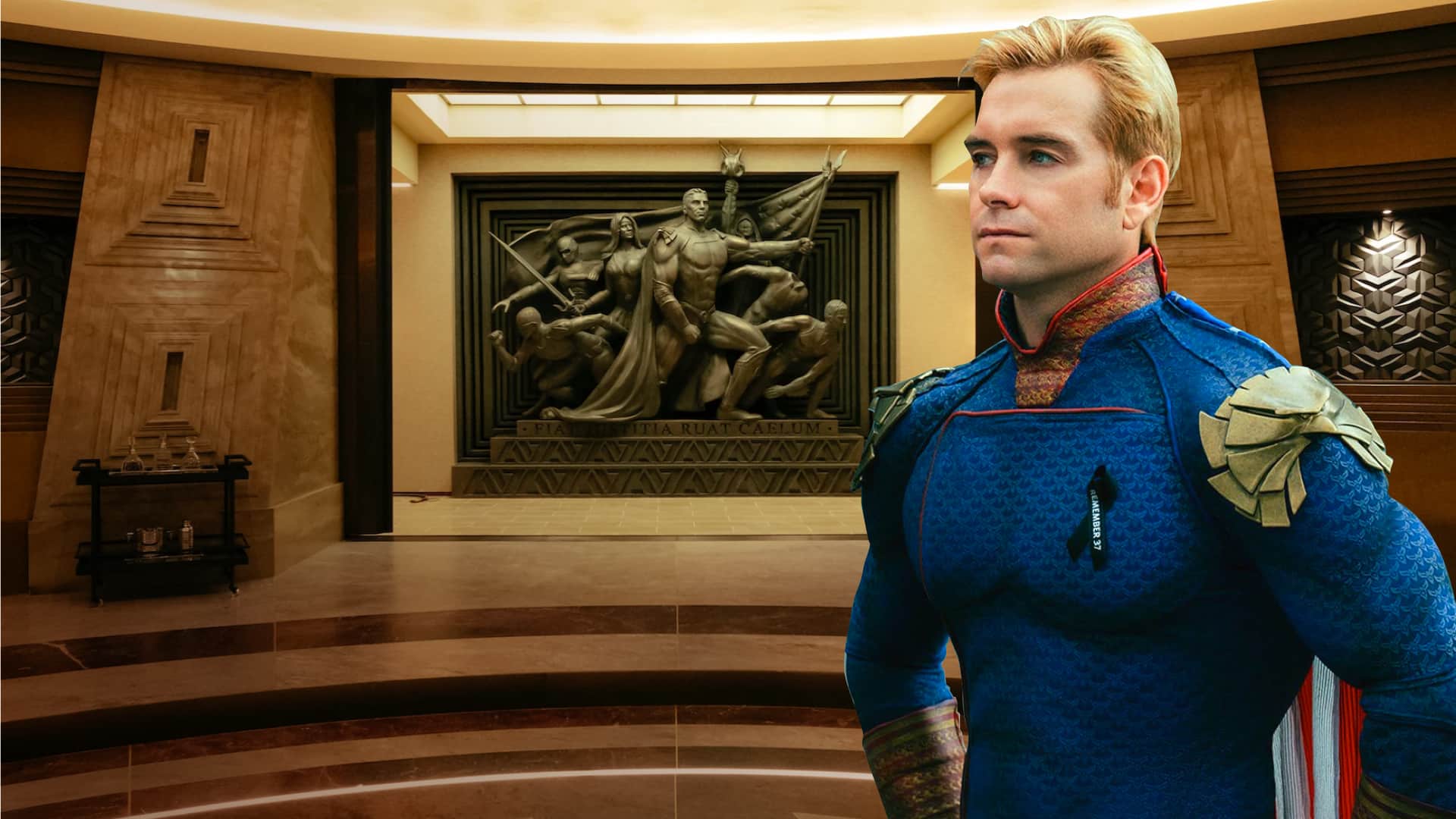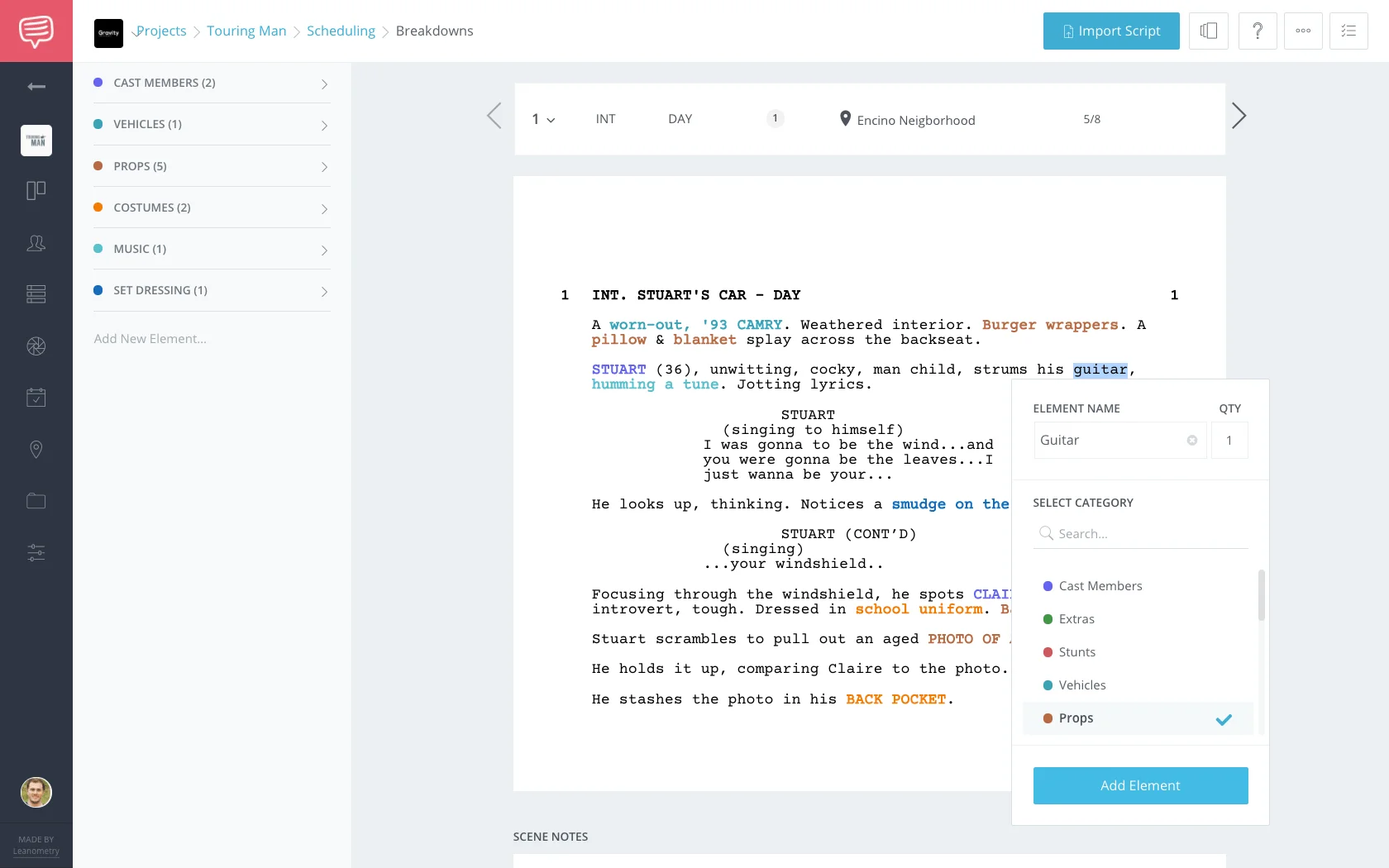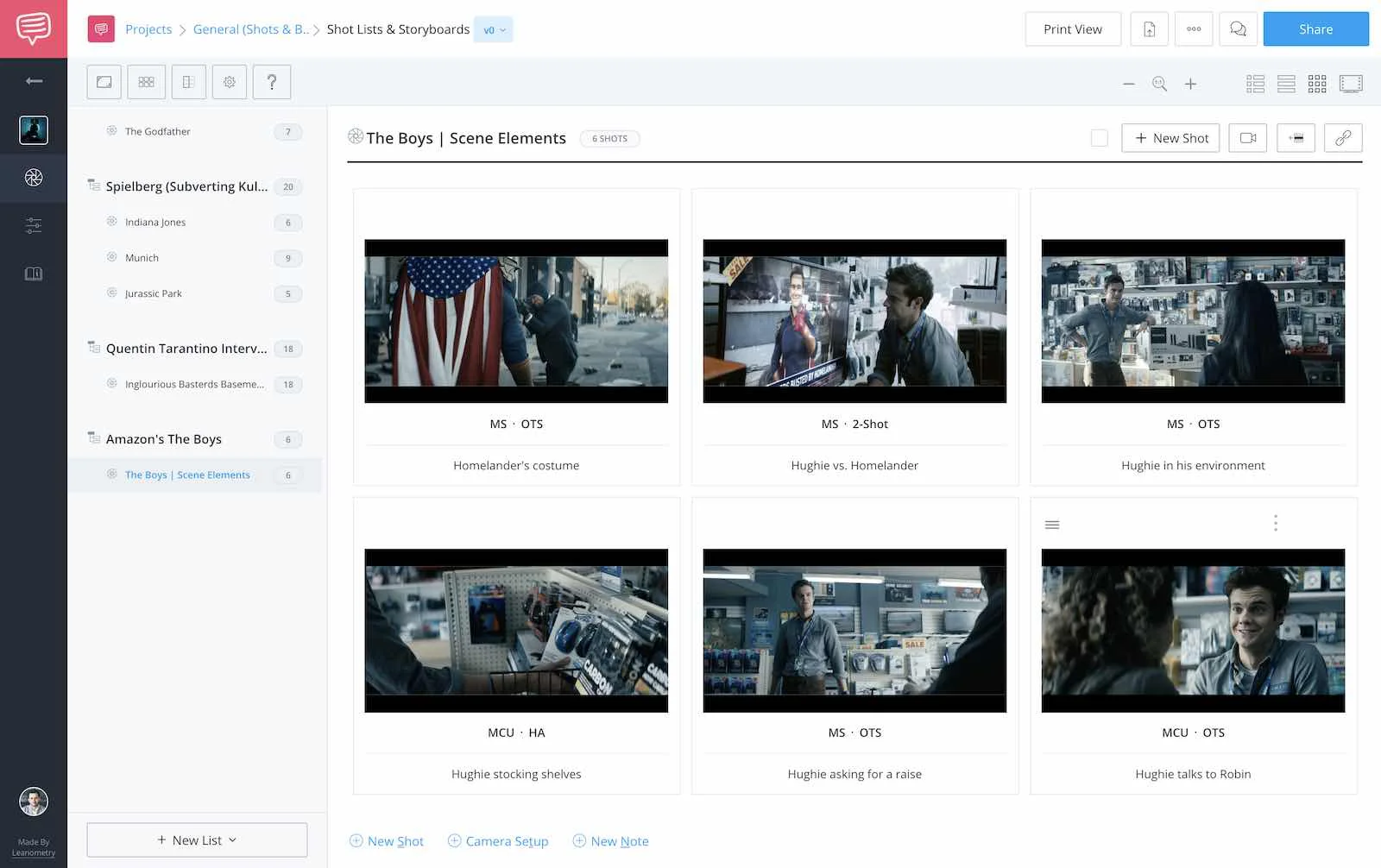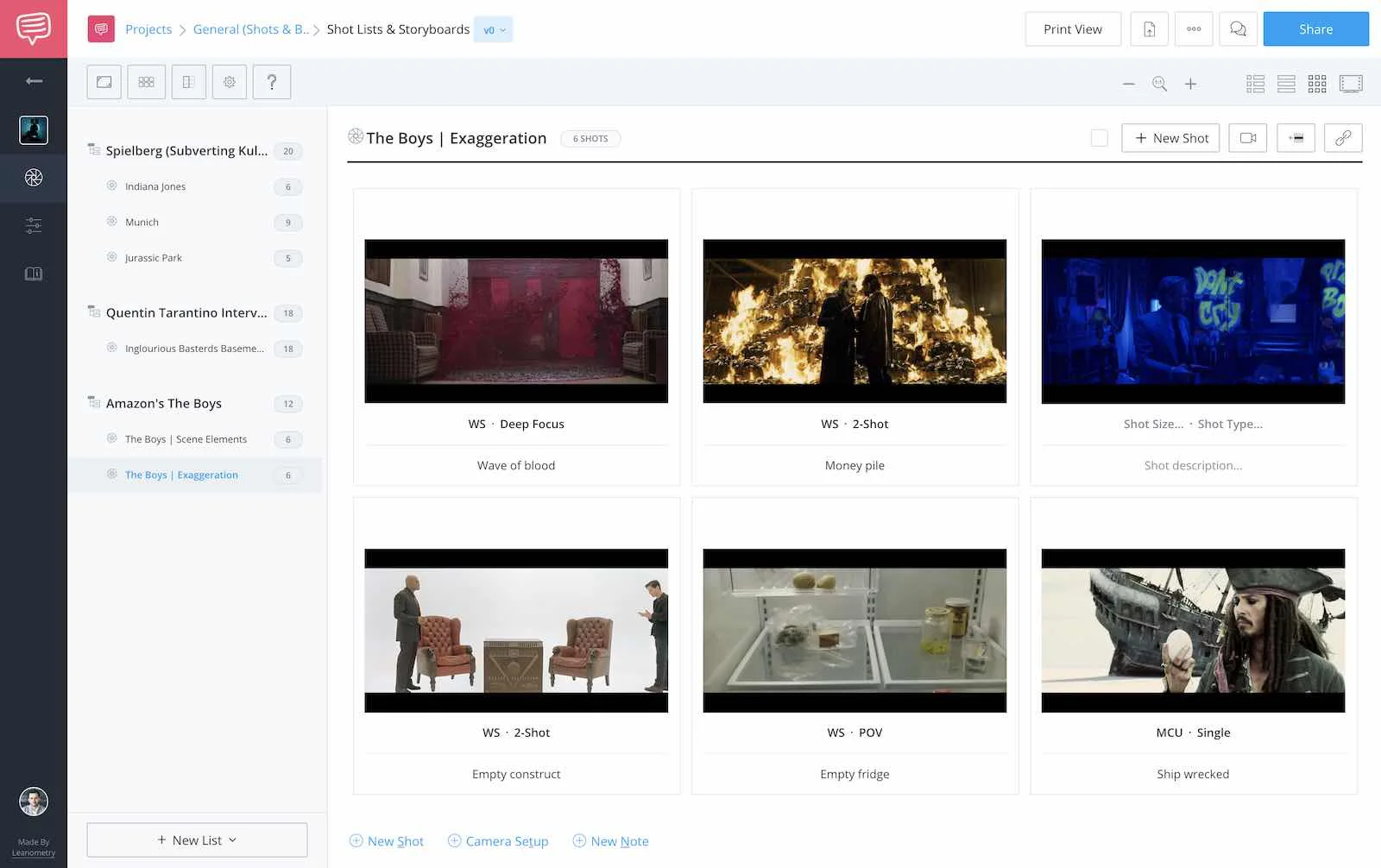You’re a filmmaker who wants to get the most out of your production design, mise en scene, and scene elements, but you’re not sure how to plan and maximize your visual opportunities.
In this post, we’re going to breakdown the production design, mise en scene, and scene elements in the Amazon Original series, The Boys, so that you can apply this same process to your own projects.
Amazon’s The Boys TV Show
How to identify your mise en scene
How do you create unforgettable worlds? How do you establish unique characters, settings, and plots? One great way to do this is with production design. But “stylish design” for its own sake isn’t enough.
Your locations, props, wardrobe, and set dressing, all have to help you build a story. They’re opportunities for you to convey mood, tone, and theme all without saying a word.
Mise-en-scene Explained with Kubrick • Subscribe on YouTube
Production Design elements make up nearly everything you see on the screen including wardrobe, set design and props. You identify these elements when performing a script breakdown.
So what exactly is a script breakdown?
A script breakdown is an important task you carry out during pre-production where key members of the production team go through the script, line by line, and finds every “element” needed to tell the scene effectively. An element is any scene requirement to tell the story such as props, wardrobe, locations, set design, vehicles, anything really.
Take a look at a script breakdown right here:
Identify Your Mise En Scene • Shot Listed in StudioBinder
Some of these scene elements are needed behind the camera, but for this post, we’re going to discuss the ones we see on screen, specifically the elements that fall into production design and mise en scene.
Amazon’s The Boys | Production Design
First, consider your story
First thing is to read the script because it should inform every decision you and your team make including mise en scene, design, and elements.
The Boys is about an ordinary young man named Hughie. He’s living a simple life, working as an AV specialist for a quiet electronics store.
In short, he’s an underdog. One surrounded by a culture that’s completely obsessed with celebrity. Specifically, celebrities with superpowers. They are above the law both figuratively and literally.
The Boys show is also very much a satire, both of money-hungry cinematic universes but also celebrity vs civilian culture. So how are these story details linked to elements of Production Design?
First, let’s talk about the wardrobe.
WARDROBE | STORY
How do the costumes in The Boys support the story? In the very first scene, we meet Homelander. What is the first thing we see?
- The American flag
- The eagle shoulder pads
- The vibrant colors
- The perfect hair
Homelander is a person that’s made for the limelight.
In the next scene, we see Hughie. What do we see in this scene?
- Conservative work attire
- Brown corduroy pants
- Laminate ID
Unlike Homelander, there are no vibrant colors here. Nothing to draw our attention. The screenwriters intentionally put these two scenes back to back, and thus the costumes back to back.
Both of these characters are at work, and when you compare their costumes, you get an immediate sense of their identities. This wardrobe contrast illustrates the different lives they lead without a word. You get visual contrast that builds and reinforces narrative contrast.
The Boys Scene Elements • Shot Listed in StudioBinder
Enter the mysterious Billy Butcher who wants to take down the superhero establishment. He isn’t dressed like the Supes, but he isn’t dressed normally either. Billy Butcher is somewhere in between, draped in a black duster trench coat, you get the sense he’s hiding something.
I wonder what that says about his character?
SET DESIGN | STORY
What about the set design?
The set design in the boys serves as a constant reminder of circumstances. The Art Department goes to great lengths to tell us that this world is similar to ours, but also controlled by the supes.
Like in the scene where Hughie just wants to buy some beer, but instead he’s surrounded by images of A-Train, the Superhero that stole his life. The script may mention that A-Train is everywhere Hughie turns, but much of this detail was conceptualized during the script breakdown.
That’s because a large part of production design is reading between the lines and searching for every opportunity to tell a story through mise en scene, production design, and scene elements.
This creates a complete, robust world. The aisles in the scene are tightly packed, so there is nowhere for Hughie to escape. Even the somber blue tint of the color-grade matches A-Train’s blue uniform.
Everything in this scene is there to remind us that this world exists to serve the celebrities, and by everything, this also includes the props.
PROPS | STORY
Take this early moment where Hughie makes a sale.
Hughie selects a high-speed HDMI cable, one that the script describes as having more conductive carbon, but when you look at the surrounding shelf space you’ll notice an A-train branded computer mouse.
Both of these props foreshadow the events to come. The conductive carbon may have been in the script, but the A-train mouse may have not.
Props shouldn’t solely be there just for style or happenstance, but rather there to introduce important story points as well as convey character.
RECAP | STORY
When planning your own production, always think about story. Find opportunities in the script to support the characters, setting, and plot.
If you have characters who lead vastly different lives, show this through their costumes. Use your mise en scene, production design, and scene elements to make a statement that helps eliminate the need for dialogue.
But how do you go about building mise en scene, production design and scene elements that are both accurate and believable?
Related Posts
Amazon’s The Boys | Mise En Scene
Next, make sure to compile research
Your research will not only help to steer your decisions, but it also helps a filmmaker communicate and support their unique vision.
Many directors, like Stanley Kubrick, Wes Anderson, and Christopher Nolan are known to be very hands-on with mise en scene, production design, and with their scene elements.
The good news is that research can be found everywhere:
- Historical records
- Newspapers
- Magazines
- Books
- Photos
- Interviews
- TV Shows
- Films
For Amazon’s The Boys, their entire show is based on a graphic novel.
RESEARCH | WARDROBE
Let’s look at the research needed for the wardrobe. Every costume you see in The Boys has some connection to existing superhero costumes:
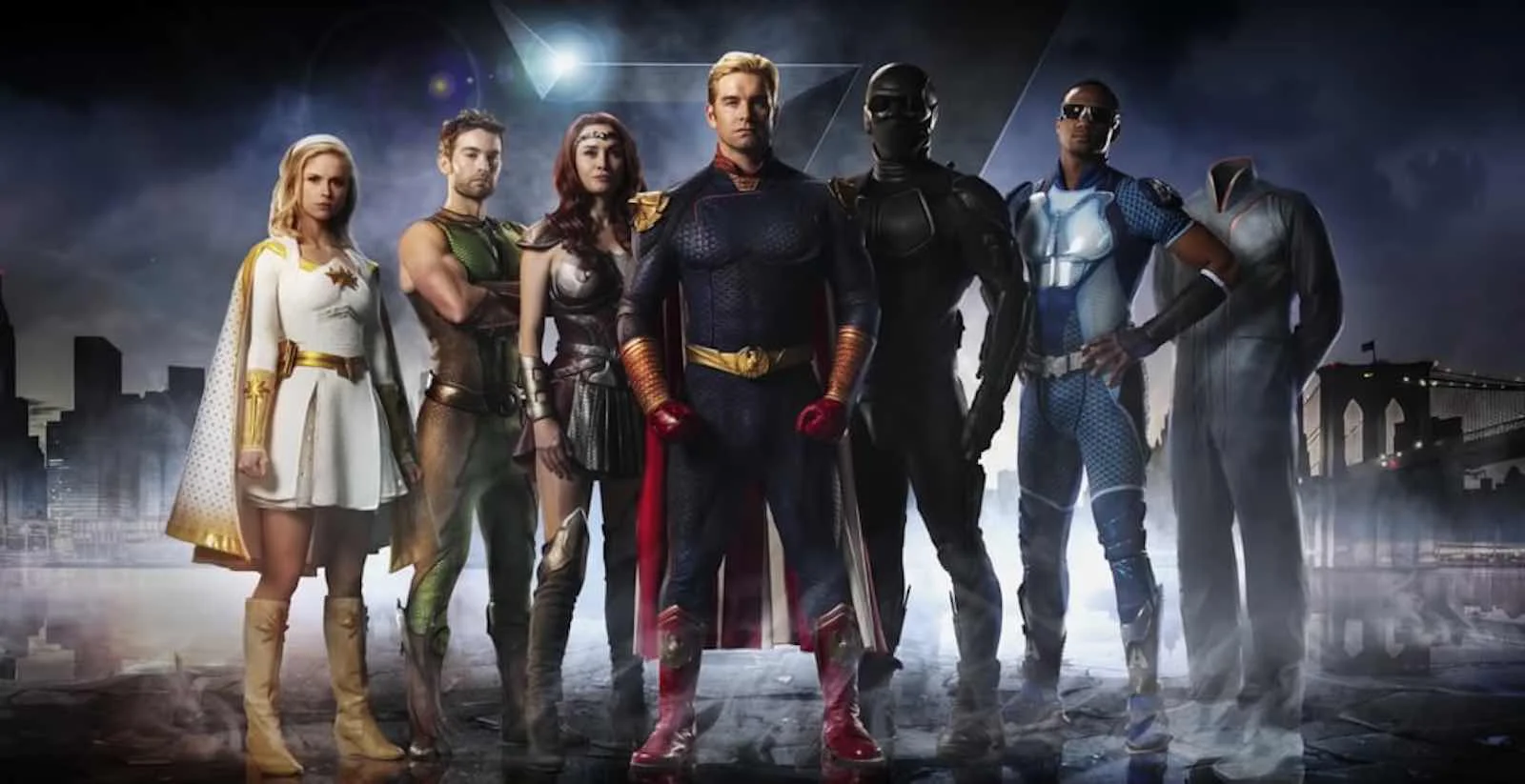
The Seven - Amazon's "The Boys"
The production design team had research from the original comic but also spent time researching costumes from Marvel and DC heroes.
SET DESIGN | STORY
Much of the set dressing in Amazon’s The Boys acts as branding opportunities for the Supes. In some instances, it takes cues from Greek and Roman art. After all, the Supes are meant to be modern gods.
- Stone busts
- Columns
- The marble
- The ceiling art
The production design and mise en scene also take inspiration from Marvel and DC. The “V” shaped table looks eerily similar to the one inside the Avengers’ spaceship. “The 7 Tower” is also meant to resemble the sets from popular DC and Marvel films. Research is also important when you want to reflect real-life corporations.
Take the scene where Starlight is first introduced to the shareholders. The entire scene plays out like a comic con movie announcement. The limousine and opulent Vought podium on stage are dead ringers.
Vought Welcomes Starlight
When satirizing an industry, you’ll need to analyze real-life images and videos so that your scenes closely resemble these events.
That way the viewer can draw a connection between the real world and your world. For Amazon’s The Boys, the filmmakers compiled photos of:
- Corporate offices
- Electronic stores
- Audition spaces
For the “Seven Tower”, production designer Dave Blass used the existing window style from the filming location in Toronto, The Roy Thomson Hall, and used it to inform the rest of the building.
It went from this:
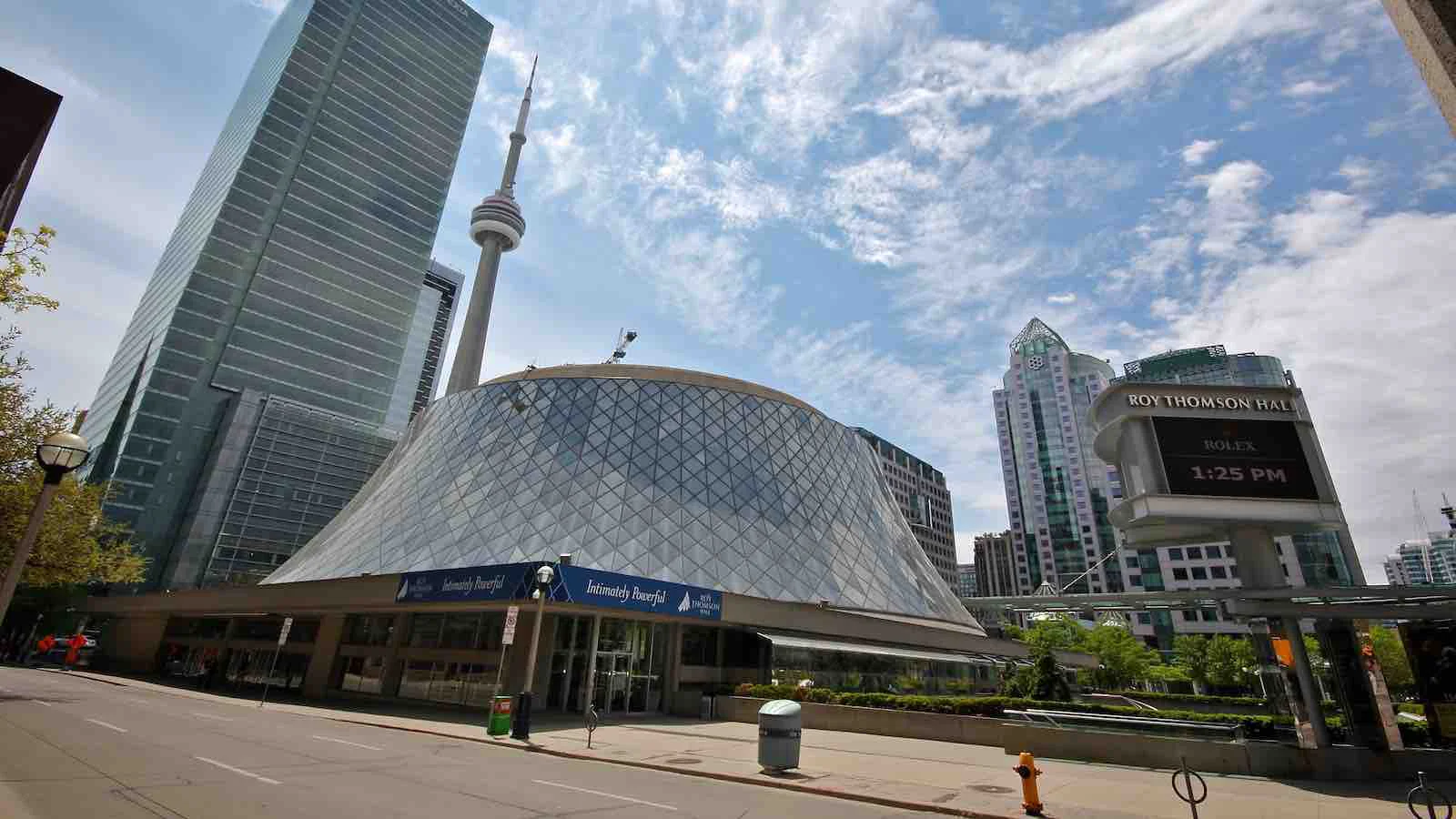
Toronto's Roy Thompson Hall
To looking like this:
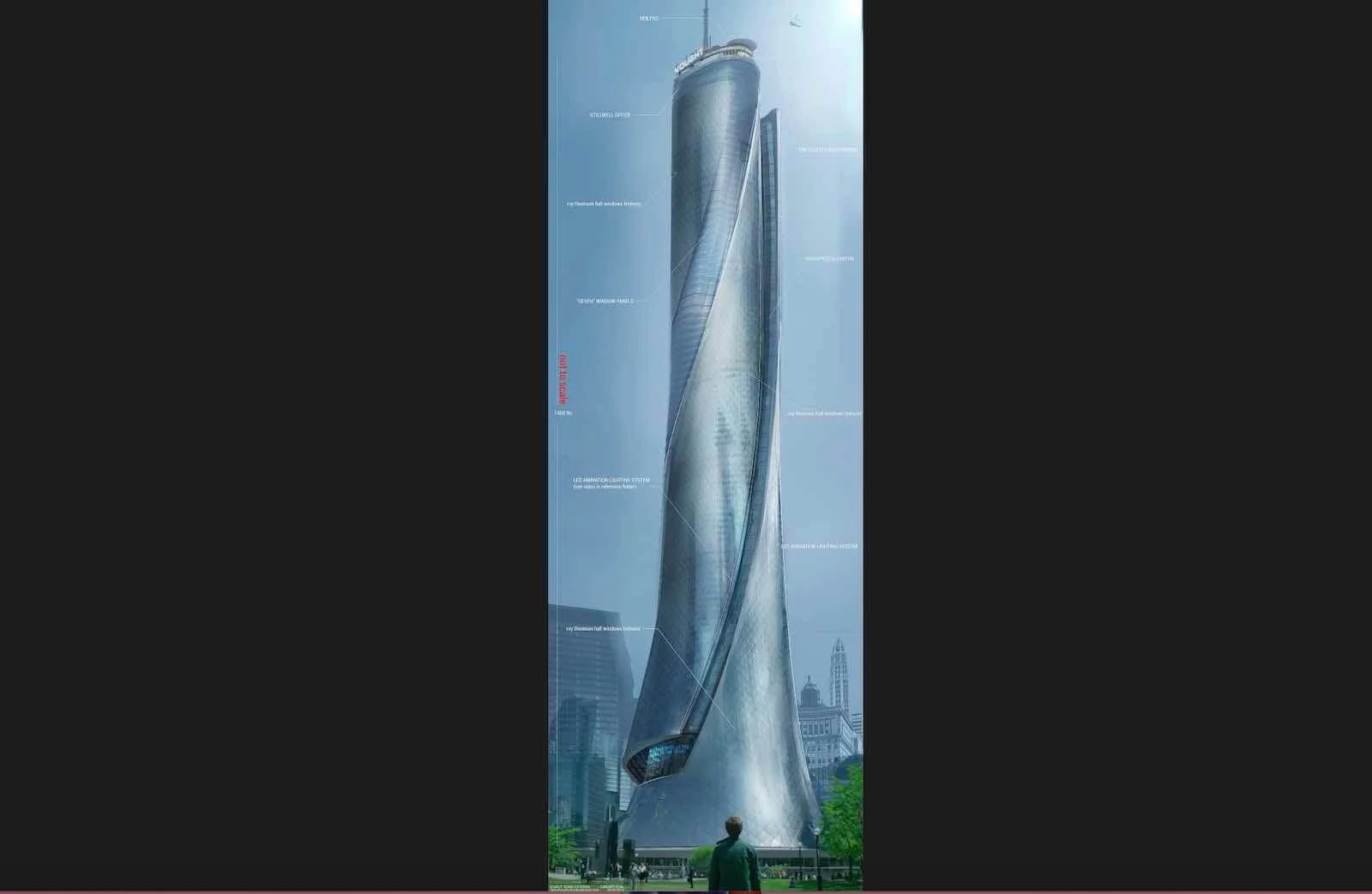
The Seven Tower - Amazon's "The Boys"
They did this for stylistic reasons, to create a Mount-Olympus-like building that towered over the city, but they also did it for practical reasons, so that when they filmed inside the Roy Thomson Hall, they would have a consistent look both inside and out.
PROPS | RESEARCH
What should the superpower steroid known as Compound-V look like? Which color should it be? How about the viscosity? The container?
To build a believable and consistent world, research is key. Collect news clippings and create mood boards for wardrobe, set design, and props.
So we’ve talked about building a world that reflects and enhances the story as well as conducting research to make it as believable as possible. How do you make your mise en scene and scene elements memorable?
Related Posts
Amazon’s The Boys | Scene Elements
Lastly, find areas to exaggerate
This is where you need to take things to the next level. Your third job is to take what you learned from your research and exaggerate it.
Exaggeration is critical. In film and television, you have a limited amount of time to hammer home a point. Exaggeration heightens the effect.
It can be exaggerated to the max….
- Like the WAVE of blood in The Shining
- Like the PILE of money in The Dark Knight
- Like the WALL-TO-WALL graffiti in The Game
You can also exaggerate emptiness, or to the minimum.
- Like the construct in The Matrix
- Like the refrigerator in Fight Club
- Like the barren desert in Pirates of the Caribbean
Exaggeration in The Boys • Shot Listed in StudioBinder
WARDROBE | EXAGGERATION
The costumes in Amazon’s The Boys are all highly exaggerated, both with regard to the color schemes and styles. When they occur, the filmmakers also exaggerated the changes in costumes.
Starlight’s costume goes from Iowa farm girl to an exploited sex symbol:
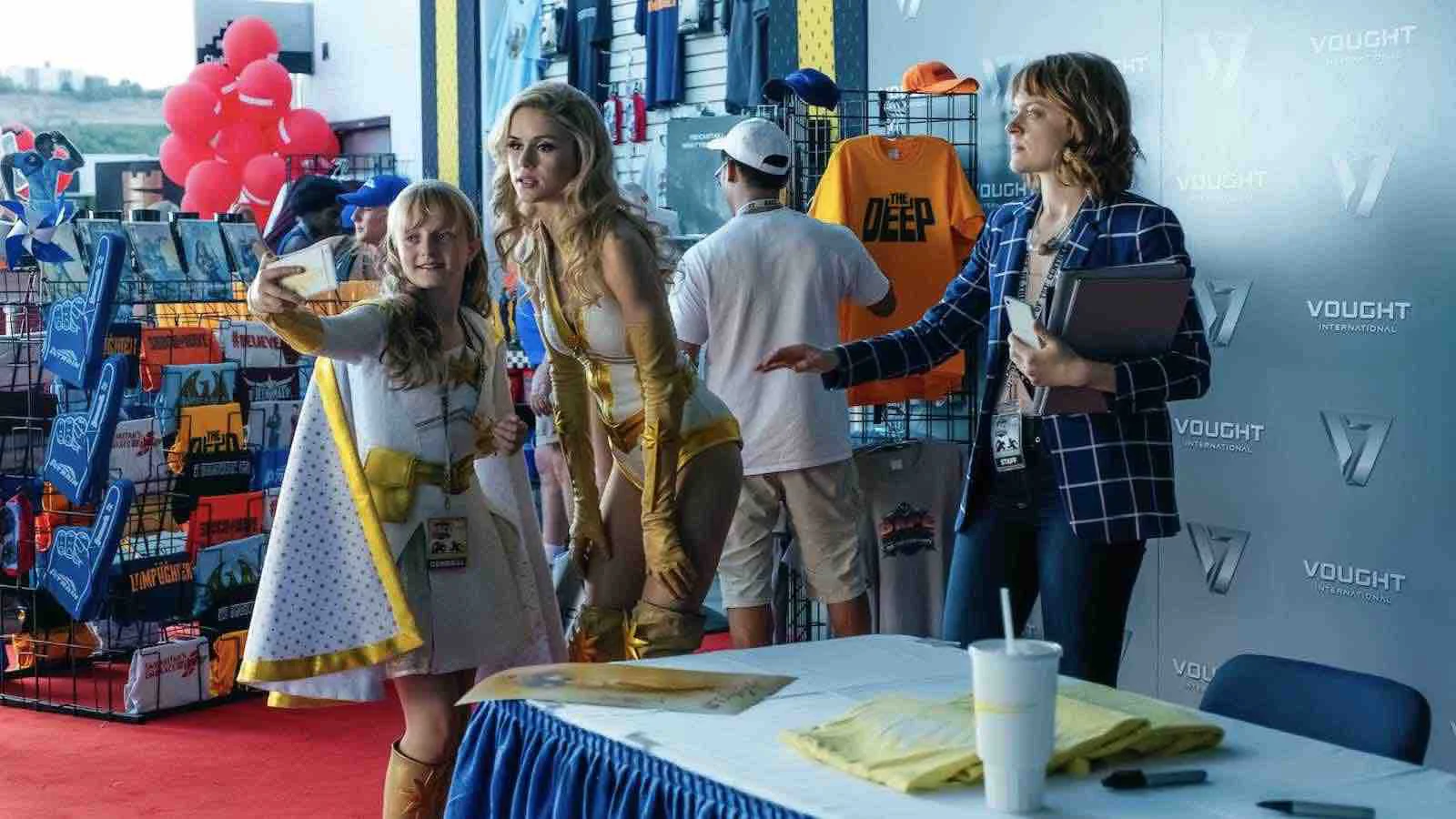
Starlight's Costume Evolution
When you see the hyper-specific and exaggerated look of the Supes standing next to a civilian, like Hughie, you can see the contrast.
Hughie doesn’t just wear a uniform, he wears one with muted colors and a frumpy fit. His wardrobe looks like it moonlights as prison wear. It’s a far cry from the Supes, and the difference is made painfully clear due to the exaggerations in the scene elements.
SET DRESSING | EXAGGERATION
When you have a story that’s all about ego and branding, there’s no shortage of opportunities to showcase:
- Statues
- Murals
- Posters
- Photos
- Advertisements
PROPS | EXAGGERATION
In a series about superheroes, the props are constantly used to showcase their powers at work, like the first time we meet Starlight:
Caption goes here...
She’s lifting a car with just her arms, and punching holes through a brick wall. It’s over-the-top, but that’s what makes it so memorable.
Here’s a scene where Pop-Claw injects some of the Compound-V:
Popclaw takes Compound V
When they cut to the next scene, she’s lifting weights. It could have been 300 or 400 pounds, but no! It’s exaggerated to 945 pounds!
Production design gives you an opportunity to exaggerate so that you leave zero room for confusion or miss an opportunity to say something without saying a word. This can be identified in your scene notes with either mood boards or when identifying the quantity of your elements.
After all, why have average when you can have extraordinary?
Amazon’s The Boys | TV Show
Mise En Scene, Production Design, and Scene Elements Summary
When building the elements of your world:
First, Consider your STORY
Remember to read between the lines as well to find hidden opportunities and those unwritten elements that round out the world.
Next, do your RESEARCH
This helps you build a rich, authentic universe that connects to history, precedent, and immerses your viewer into your fictional world.
Lastly, remember to EXAGGERATE
This will help make your mise en scene and your overall scenes more memorable. This can be achieved with under-exaggeration as well.
Up Next
Steven Spielberg’s Filmmaking Style
What are some other movies or TV shows you’d like to see us do for a production design, mise en scene, and scene elements breakdown? Who do you think is a master of world building? Tell us in the comments.
Next, check out our post on Steven Spielberg’s Directing Style so that you can learn how the greatest living director approaches making his films, and then apply the lessons you learn from the post into your own films.
Up Next: Steven Spielberg’s Filmmaking Style Explained →
Easily create script breakdown sheets online.
Import scripts. Tag elements like props, wardrobe, and cast. Create breakdown summaries and DOOD reports in a snap.
